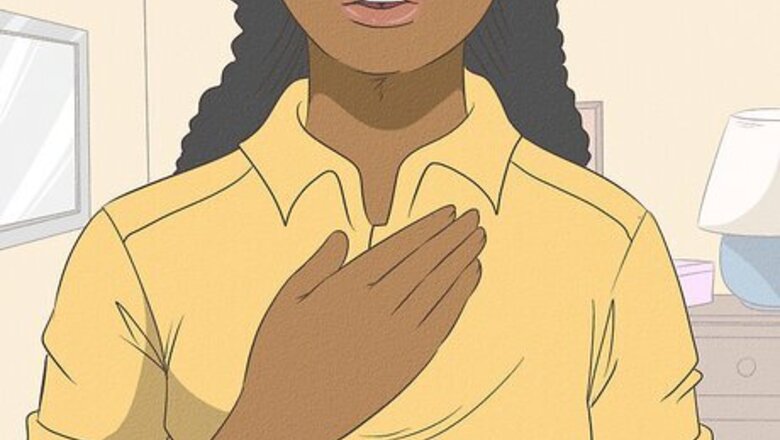
views
Assessing Your Dog After The Fall
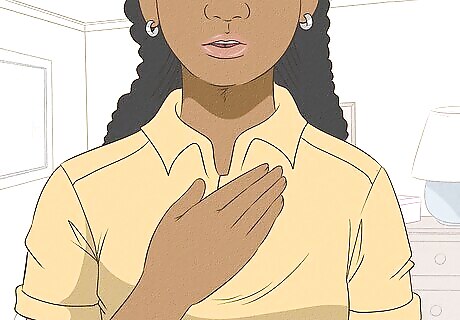
Keep calm. Although witnessing your dog suffer a fall can be a frightening experience, you need to remain calm. By staying as relaxed as possible you will be able to best assess your dog's condition as well as help your dog to remain calm. This can prevent further injury or stress. If your dog sees you panicking it will likely also panic, increasing its pain and stress levels.

Look for injuries. After your dog has fallen, calmly look for any signs of injury that you can see. Don't touch your dog as you look, use only your eyes. By evaluating the extent of damage your dog has sustained during the fall, you will be able to best judge what to do next. Look for some of the following signs of injury in your dog: Yelping is a clear sign that your dog is in pain. Check your dog for any surface injuries such as cuts, scrapes, or protruding bones. Look at the dog's front and back legs. If a limb is broken, it may appear disfigured, being bent or held at an odd angle. Some broken bones might not be visible. If your dog is limping for more than five minutes, take it to your veterinarian. Injured dogs will breathe faster than normal. Look for a sustained increase in the rate of breathing in your dog. Not all injuries will be external or visible. Only a veterinarian will be able to verify internal injuries. Look at the dog's gums. Pale or white colored gums may mean that the dog is in shock or is bleeding internally. This is an emergency and the dog will need immediate veterinary attention.

Apply first aid. If you have noticed any obvious injuries to your dog you can apply first aid. Applying basic first aid to your dog can help prevent the injury from worsening during the time it takes to get it to the veterinarian. Only apply first aid if your dog seems comfortable with you doing so. Stress and pain might make your dog growl or even bite you, so work slowly and monitor your dog's reactions. If your dog is unable to move, do not pick it up until it has a stable and solid surface underneath it such as a board. Never treat any serious wounds yourself. Leave severe injuries for your veterinarian to treat. Clean any superficial cuts or wounds by applying saltwater to the affected area. Apply pressure using a clean piece of gauze to any areas that are heavily bleeding.
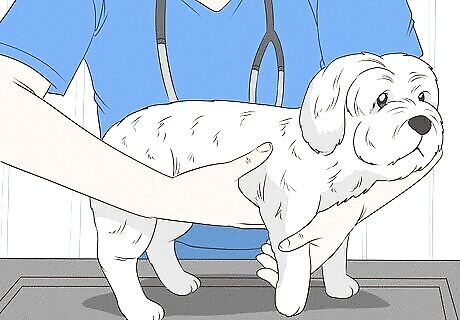
Call and visit your veterinarian. Having assessed what injuries your dog may have and after applying first aid, it's time to call your veterinarian. Your veterinarian will be able to best identify and treat any injuries your dog may have after its fall. If your dog has severe injuries, take it to an emergency veterinarian immediately. Take your dog to the veterinarian as soon as possible, even if injuries are not immediately life threatening. Even if your dog doesn't have apparent or obvious injuries, your veterinarian can detect issues that may be internal or unclear. Betsy Brevitz Betsy Brevitz, Canine Health Specialist After a tumble, remain calm and carefully assess your small dog for injuries. Check their gums, limbs, and torso while avoiding manipulation. Yelping, odd movements, or abnormal breathing require prompt veterinary care, even without visible trauma. Transport gently, monitor closely over subsequent days, and follow recovery instructions diligently. With loving attentiveness and prompt care, most dogs bounce back resiliently.
Taking Your Dog To The Vet
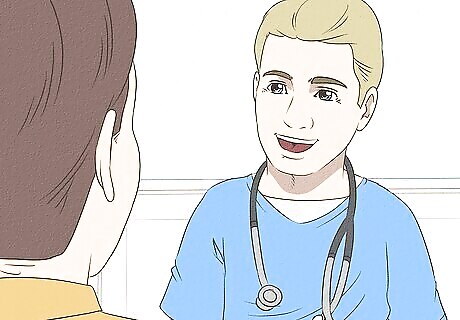
Inform your veterinarian about the fall. When you meet with your veterinarian you will need to provide accurate information about your dog's injuries. By giving your veterinarian this information, they will be able to start treating your dog more quickly and efficiently. Tell your veterinarian exactly how and when your dog fell. Inform your veterinarian about any signs of injury that you have noticed. Let your veterinarian know about any first aid you have administered. Tell your veterinarian about any past injuries or surgeries that your dog may have had. Be ready to provide basic information about your dog including age, current medications, or other health issues.
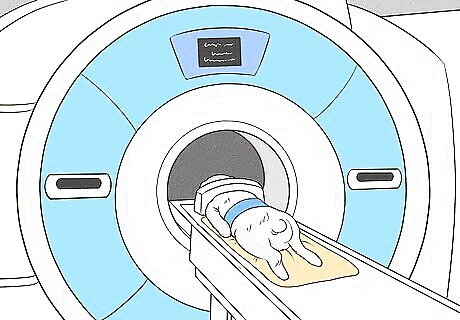
Be aware of some tests and procedures your veterinarian may perform. Your veterinarian will likely perform some diagnostic tests and will administer certain medical techniques to treat your dog's injuries. Review some of the following possible tests and treatments that your veterinarian may perform. A basic physical exam will let your veterinarian learn of any surface injuries as well as the overall condition of your dog. Orthopedic examinations will check for any injuries to the bones, joints, muscles, or affected range of movement in your dog. This examination may include an x-ray. Neurological examinations will be ordered if your dog has hit its head during the fall. If your dog is walking oddly or seemingly unaware, this test can help determine if your dog's nervous system was damaged.
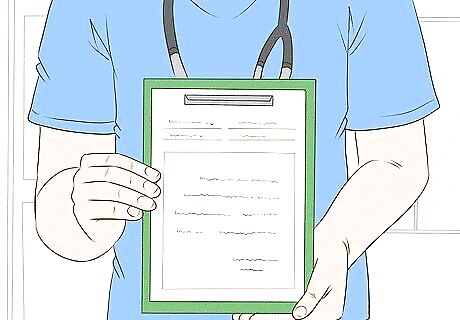
Follow any instructions given by your veterinarian. After your dog has received initial emergency treatment and has been cleared to go home with you, your veterinarian will likely give you home-care instructions. These instructions must be accurately followed to ensure that your dog will have a quick and full recovery. If your dog is given medications, keep up with the schedule. Make sure your dog is consuming them completely if administered orally. Keep up with changing any bandages that your dog may need. You may need to apply ice or heat packs to your dog's injuries. Make sure your dog rests and keep activities to a minimum while injuries heal.
Preventing Your Dog From Falling
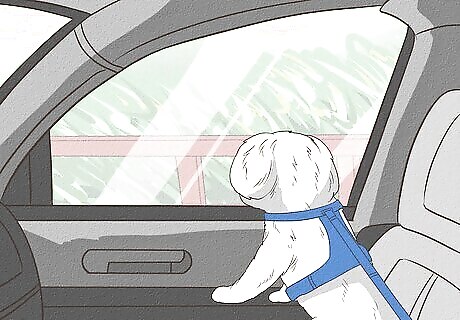
Keep car windows up. If your dog enjoys going for car rides with you, take this simple step to help keep it safe. Although most humans wouldn't dare jump out of a moving car, your dog might not be so hesitant. Keep the windows rolled up enough to prevent your dog from jumping out during your drive. You might also wish to purchase a seatbelt designed specifically for your dog, to keep it as safe as can be during any road trips. Consider locking power windows as dogs may accidentally be able to roll them down. Do not leave your dog alone in the car on a hot day with the windows rolled up. This can raise temperatures to a deadly degree for your dog.
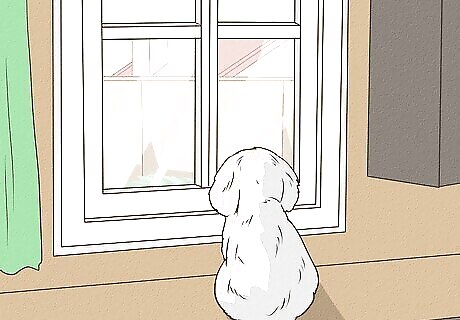
Leave house windows closed. A common fall hazard for dogs is any open window in your house that it can reach. Even if the window has a screen on it, your dog may still try and escape, which can lead to it suffering a dangerous fall. Any window your dog can reach needs to be kept closed enough so that your dog cannot fit out the window.

Keep your dog away from fall hazards in the home. If your home has potential fall hazards you should prevent your dog from accessing this areas. Keeping your dog away from these potentially dangerous ares will help keep it safe in your home. Steep stair cases, lofts without a railing, and balconies are some examples of places in your home that your dog may fall from. Make sure to leave doors to these areas closed. You can buy pet-gates to block off staircases or doorways in your home. Never bring your dog into an area of the house that presents a fall hazard.

Take your dog to your veterinarian if it falls without reason. If you notice your dog stumbling and falling without any apparent reason, it should be taken to your veterinarian as soon as possible. This may be a sign of a medical condition that your veterinarian will be able to diagnose and offer treatment options for. Inner ear issues or ear infections can cause your dog fall down. Brain tumors, which are more common in older dogs, can also be responsible for your dog falling.















Comments
0 comment